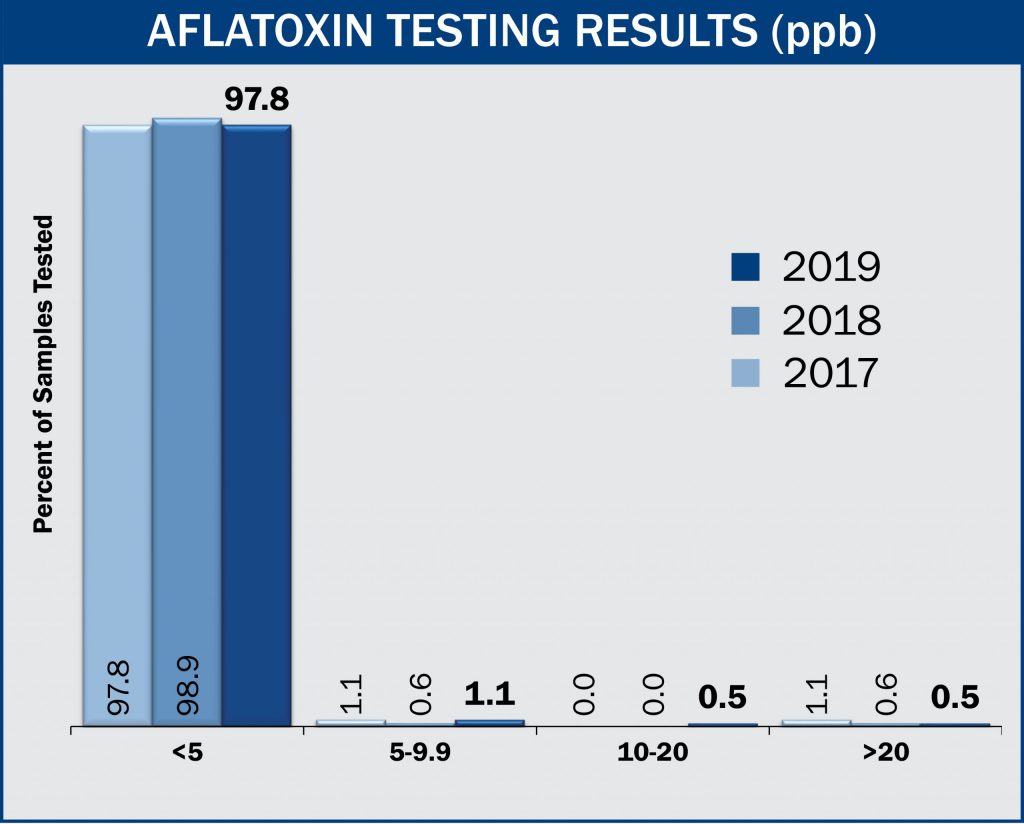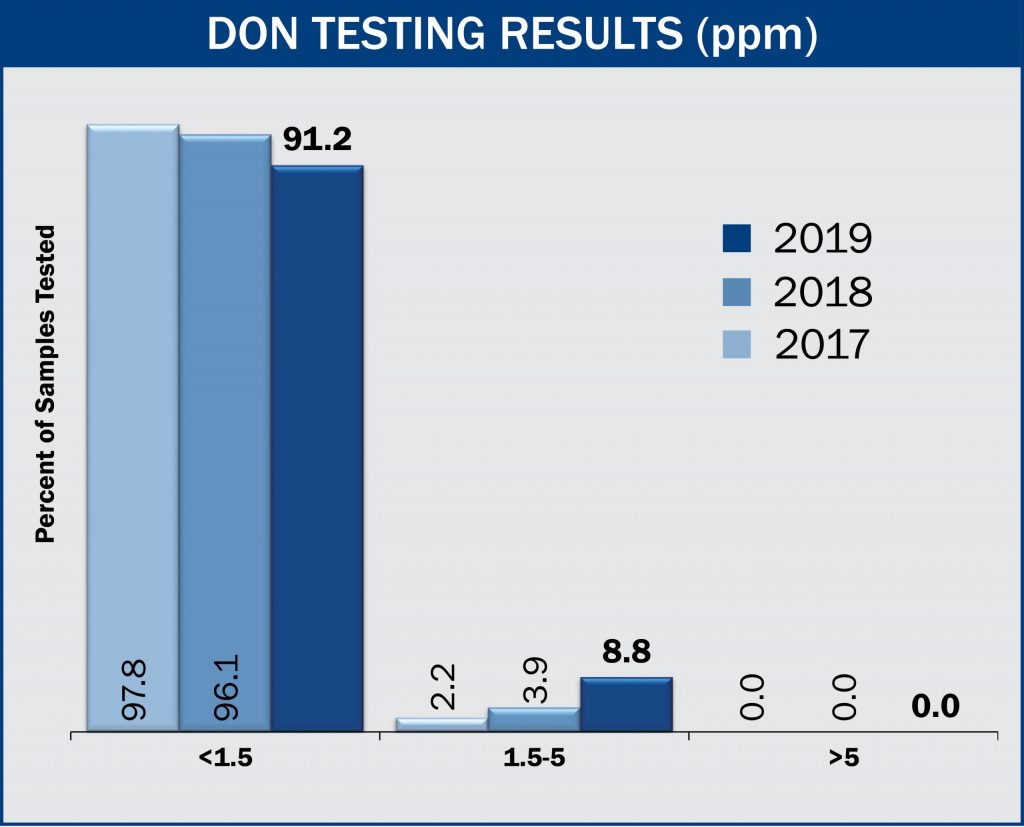Assessing the Presence of Aflatoxins and Deoxynivalenol (DON)
At least 25% of the minimum number of targeted samples (600) were tested to assess the impact of this year’s growing conditions on total aflatoxin, DON and fumonisin development in the U.S. corn crop. The sampling criteria, described in the “Survey and Statistical Analysis Methods” section, resulted in a total number of 182 samples tested for mycotoxins. Details on the testing methodology employed in this study for the mycotoxins are in the “Testing Analysis Methods” section.
Results: Aflatoxins
A total of 182 samples were analyzed for aflatoxin in 2019, compared to 181 and 180 samples tested for aflatoxin in 2018 and 2017, respectively. Results of the 2019 survey are as follows:
- One hundred seventy-eight (178) samples, or 97.8% of the 182 samples, had no detectable levels of aflatoxin (below the FGIS lower conformance limit of 5.0 ppb). This is close to the percentage of the samples tested with no detectable levels of aflatoxin in 2018 (98.9%) and 2017 (97.8%).
- Two samples (2) or 1.1% of the 182 samples showed aflatoxin levels greater than or equal to 5.0 ppb, but less than 10.0 ppb. This percentage is almost identical to 2018 (0.6%) and 2017 (1.1%).
- One sample (1) or 0.5% of the 182 samples showed an aflatoxin level greater than or equal to 10.0 ppb, but less than or equal to the FDA action level of 20.0 ppb. This percentage is similar to both 2018 (0.0%) and 2017 (0.0%).
- One sample (1), or 0.5% of the 182 samples, showed an aflatoxin level greater than the FDA action level of 20.0 ppb. This percentage is almost identical to 2018 (0.6%) and 2017 (1.1%).
- These results denote that 181 samples, or 99.4% of the 182 sample test results in 2019, were below or equal to the FDA action level of 20.0 ppb, compared to 99.5% of the samples tested in both 2018 and 98.9% in 2017.
The relatively high percentage of this year’s samples below the FGIS lower conformance limit of 5.0 ppb (97.8%) may be due, in part, to weather conditions not conducive to aflatoxin development in 2019 (see the “Crop and Weather Conditions” section for more information on 2019 growing conditions).

Results: Deoxynivalenol (DON) or Vomitoxin
A total of 182 samples were analyzed collectively for DON in 2019, compared to 181 and 180 samples tested for DON in 2018 and 2017, respectively. Results of the 2019 survey are as follows:

- One hundred sixty-six (166) samples, or 91.2% of the 182 samples, tested less than 1.5 ppm. This percentage for 2019 is lower than in 2018 (96.1%) and 2017 when 97.8% of the samples tested below 1.5 ppm.
- Sixteen (16) samples, or 8.8% of the 182 samples, tested greater than or equal to 1.5 ppm, but less than or equal to the FDA advisory level of 5.0 ppm. This percentage for 2019 is higher than in 2018 (3.9%) and 2017 (2.2%).
- Zero (0) samples or 0.0% of the 182 samples tested above the FDA advisory level of 5.0 ppm, which was the same as in 2018 and 2017.
Having a lower percentage of samples in 2019 testing below 1.5 ppm than in the two previous crops may be attributed to wetter than usual weather conditions that were more conducive to DON development in 2019.
